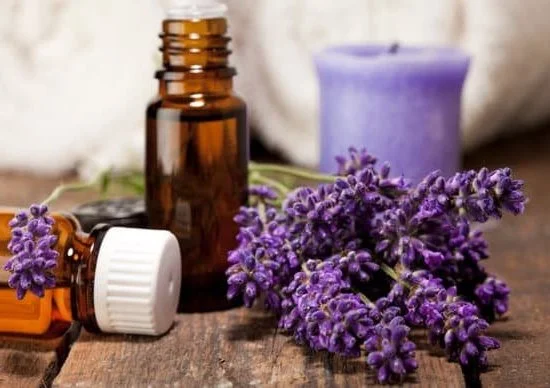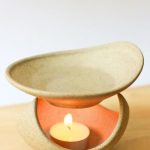Are you struggling with a restless night’s sleep? Looking for natural remedies to help you relax and unwind before bed? Look no further than the power of aromatherapy. By harnessing the benefits of essential oils, you can create a soothing environment that promotes deep, restorative sleep. In this article, we will explore the science behind how aromatherapy impacts sleep patterns, as well as provide a comprehensive guide on where to put aromatherapy oils for optimal effectiveness.
Sleep plays a vital role in our overall well-being, both physically and mentally. Yet, many people struggle to attain quality sleep due to various factors such as stress, anxiety, or an overactive mind. This is where the power of aromatherapy comes in. Aromatherapy has been used for centuries to promote relaxation and induce sleep. By utilizing different essential oils and proper techniques, we can tap into the therapeutic benefits they offer.
Before delving into specific strategies and techniques, it is important to understand why and how aromatherapy works for promoting better sleep. The science behind these effects lies in how our olfactory system connects directly with our brain’s limbic system – the area responsible for emotions, memory, and hormones. When certain scents are inhaled or applied topically near specific areas of our body, they can have a profound impact on our mood and state of mind.
Throughout this article series, we will uncover which essential oils are best suited for promoting quality sleep and discuss their benefits. Additionally, we will also explore various methods of dispersing essential oils throughout your bedroom effectively. But first and foremost, let us begin by understanding why aromatherapy is so powerful when it comes to achieving a good night’s sleep.
The Science Behind Aromatherapy
Aromatherapy has been recognized for its ability to promote restful sleep and improve sleep patterns. But how exactly do essential oils impact our sleep? The science behind aromatherapy reveals some fascinating insights into the effects of essential oils on our body and mind during sleep.
- Regulation of the Limbic System: The limbic system, which is responsible for emotions, memories, and arousal, plays a crucial role in sleep regulation. Certain essential oils have been found to directly impact the limbic system, promoting relaxation and reducing stress levels. Oils like lavender and chamomile are known for their calming properties that can help induce sleep.
- Balancing Neurotransmitters: Essential oils have been found to influence neurotransmitters in the brain, such as serotonin and dopamine, which play a significant role in regulating sleep patterns. For example, bergamot oil has been shown to increase dopamine levels, leading to improved mood and better sleep quality.
- Reduction of Cortisol Levels: Cortisol is a hormone associated with stress and wakefulness. High levels of cortisol can disrupt sleep patterns and lead to insomnia. However, certain essential oils like ylang-ylang have been found to decrease cortisol levels, promoting relaxation and better sleep.
To maximize the benefits of aromatherapy for sleep, it’s important to select the right essential oils that target specific areas related to sleep regulation. Lavender oil is widely regarded as one of the most effective oils for promoting deep sleep due to its soothing properties. Chamomile oil is another excellent choice as it helps calm the nervous system and reduce anxiety.
In addition to these oils, valerian root oil can aid in falling asleep faster while improving overall sleep quality. Frankincense oil has sedative properties that can encourage relaxation before bedtime. Lastly, sandalwood oil promotes deep relaxation and peaceful slumber.
By understanding how essential oils impact our sleep patterns on a scientific level, we can strategically incorporate them into our bedtime routine for a more restful and rejuvenating sleep.
Setting the Mood
Creating the ideal bedroom environment is crucial for achieving a restful sleep. In addition to incorporating aromatherapy oils, there are several key factors to consider when setting the mood in your bedroom.
Lighting
The first step in creating an ideal sleep environment is ensuring that your bedroom has the right lighting. Natural light is beneficial during the day as it regulates our internal body clock and promotes wakefulness.
However, when it comes to nighttime, it’s important to minimize exposure to bright lights, especially blue light emitted by electronic devices. Consider using blackout curtains or blinds to block out any external light sources and invest in dimmable lights or bedside lamps with warm-colored bulbs for a relaxing ambiance.
Noise
Another factor that can significantly impact sleep quality is noise. Unwanted noise can disrupt your ability to fall asleep and stay asleep throughout the night. If you live in a noisy area or have trouble with outside noises disturbing your sleep, consider using earplugs or investing in a white noise machine or a fan to generate soothing sounds that can mask any disruptive noises.
Temperature
Maintaining an optimal temperature in your bedroom can greatly contribute to restful sleep. Ideally, the temperature should be cool, between 60-67°F (15-19°C), as we tend to sleep better in slightly cooler environments. Experiment with different bedding materials and layers until you find what works best for you in terms of comfort and temperature regulation.
Avoid Clutter
A cluttered bedroom can create visual distractions that may make it difficult for you to relax before falling asleep. Take the time to declutter your sleeping space and keep surfaces free from unnecessary items. Additionally, ensuring that your bed is clean and comfortable will further enhance your sleep environment.
By paying attention to these key elements, you can create an ideal bedroom environment that promotes restful sleep. It is important to remember that everyone’s preferences and needs are different, so it may be beneficial to experiment with various adjustments until you find what works best for you.
Once you have set the stage with the perfect mood in your bedroom, incorporating aromatherapy oils for sleep will further enhance your ability to relax and enjoy a rejuvenating night’s rest.
Selecting the Right Aromatherapy Oils for Sleep
When it comes to using aromatherapy oils for sleep, selecting the right essential oils is crucial. Different oils have different properties that can enhance relaxation, promote calmness, and ultimately improve sleep quality. Below are the top five essential oils that are known for their sleep-inducing benefits:
- Lavender Oil: Lavender oil is one of the most popular essential oils used for sleep. Its soothing scent helps to reduce anxiety and promote relaxation, making it easier to fall asleep and stay asleep throughout the night. Research has shown that lavender oil can also lower heart rate and blood pressure, further supporting a restful slumber.
- Chamomile Oil: Known for its calming effects, chamomile oil has been used for centuries to promote sleep. It contains compounds like bisabolol and apigenin which have sedative properties, helping to ease insomnia and foster a deep sense of tranquility. Inhaling chamomile oil before bed can also alleviate symptoms of anxiety or depression that may be impacting your ability to relax.
- Bergamot Oil: Derived from the peel of bergamot oranges, bergamot oil has a citrusy yet floral aroma that promotes relaxation and reduces stress levels. This mood-enhancing oil helps to relieve tension and anxiety, thereby improving sleep quality. Additionally, bergamot oil has been found to stimulate the production of serotonin in the brain, which aids in regulating mood and promoting overall well-being.
- Sandalwood Oil: With its woody and earthy fragrance, sandalwood oil is renowned for its ability to calm an overactive mind and induce deep relaxation. This exotic essential oil has sedative effects that can ease anxiety, stress, and even mild depression – all of which can interfere with falling asleep easily.
- Frankincense Oil: Frankincense oil has been used for centuries in spiritual and ceremonial practices due to its deeply calming and grounding properties. Its sweet, woody scent can help alleviate insomnia and reduce anxiety levels, allowing you to achieve a state of peacefulness that is conducive to sleep.
It’s important to note that everyone’s preferences and reactions to essential oils may vary. Some people find lavender oil especially relaxing, while others may find chamomile or bergamot more beneficial. Experiment with these oils individually or blend them together to create a signature sleep-inducing combination that works best for you. Remember to always purchase high-quality essential oils from reputable sources to ensure their purity and effectiveness.
By incorporating these top five essential oils into your bedtime routine, you can create a serene environment that promotes deep relaxation and restorative sleep. Whether you choose to use them in a diffuser, as part of a massage blend, or inhaled directly from the bottle, these aromatherapy oils can make a significant difference in your sleep quality. So go ahead, explore the benefits of these essential oils, and enjoy the peaceful slumber you deserve.
Dispersion Techniques
When it comes to utilizing aromatherapy oils for sleep, there are several different dispersion techniques that can be used to effectively infuse your bedroom with the soothing scents of essential oils. Each method has its own advantages and can provide a unique experience, so it’s important to choose the one that best suits your preferences and needs.
One popular method is using a diffuser, which disperses essential oils into the air in the form of a fine mist. This not only fills the room with the desired aroma but also helps to humidify the air, creating a more comfortable sleeping environment. Diffusers come in various types, including ultrasonic diffusers, nebulizing diffusers, and heat diffusers.
Ultrasonic diffusers use water and vibrations to break down essential oils into smaller particles before releasing them into the air. Nebulizing diffusers don’t require water and work by forcing air through a small tube or glass chamber to create a fine mist of essential oil particles. Heat diffusers use heat to evaporate the essential oils into the air.
Another method for dispersing aromatherapy oils is by using room sprays or linen sprays. These are pre-mixed blends of essential oils diluted in water or alcohol and can be easily sprayed around your bedroom before bedtime. They offer a convenient way to create an instant ambiance without requiring any special equipment.
For those who prefer a more direct application method, applying aromatherapy oils topically can be just as effective in promoting sleep. You can add a few drops of essential oil to carrier oil, such as coconut oil or jojoba oil, and massage it onto specific areas of your body known as pulse points.
These include areas like your temples, wrists, or soles of feet where blood vessels are closer to the surface of the skin. The warmth from these areas can help the oils penetrate the skin and be absorbed into your bloodstream, providing a localized and long-lasting effect.
Targeting Key Areas
One of the key factors in using aromatherapy oils for sleep is knowing where to place them in your bedroom. By strategically targeting key areas, you can maximize the effectiveness of these oils and promote a restful and peaceful sleep environment. Here is a complete guide on where to put aromatherapy oils for sleep:
- Diffuser: Placing a diffuser on your bedside table or near your bed is one of the most common methods of dispersing aromatherapy oils. This allows the fragrance to fill the air in your bedroom, creating a soothing atmosphere. Make sure to follow the manufacturer’s instructions for your specific diffuser and use it with water and a few drops of your chosen essential oil.
- Pillow: Another effective way to enjoy the benefits of aromatherapy oils is by placing a few drops directly onto your pillowcase. This will allow you to breathe in the scent throughout the night as you lay your head on the pillow. However, make sure not to use too much oil as it may stain or irritate your skin.
- Bedding: Adding a few drops of essential oil to your sheets and blankets can create an all-encompassing aroma that lingers throughout the night. Since fabric tends to hold scents, this method ensures that you continue to experience the benefits even if you move around during sleep.
- Nightstand: If you prefer not to use a diffuser or apply oils directly onto your bedding, placing a small dish or cotton ball infused with essential oil on your nightstand can provide a subtle yet effective fragrance around your sleep area.
| Target Area | Method |
|---|---|
| Diffuser | Place on bedside table or near bed |
| Pillow | Apply a few drops directly onto pillowcase |
| Bedding | Add a few drops to sheets and blankets |
| Nightstand | Place a dish or cotton ball with infused oil |
By strategically placing aromatherapy oils in these key areas, you can create an environment that promotes relaxation and better sleep. Experiment with different placement methods to find what works best for you and enjoy the tranquil benefits of aromatherapy for a good night’s sleep.
Techniques for Application
Massage, diffusion, and inhalation are three popular techniques for using aromatherapy oils to promote a good night’s sleep. Each technique offers its own unique benefits and can be used alone or in combination with others for maximum effectiveness. Understanding how to properly apply these techniques can help you harness the full potential of aromatherapy for better sleep.
Massage is one of the most common and effective ways to use aromatherapy oils for sleep. By massaging the oils into your skin, you not only benefit from their soothing scents but also from their therapeutic properties. The act of massaging itself can help relax your body and mind, while the oils penetrate your skin and enter your bloodstream, promoting deep relaxation and improved sleep quality.
Diffusion is another popular method for using aromatherapy oils in the bedroom. There are various diffusers available on the market, such as ultrasonic diffusers, nebulizers, and reed diffusers. These devices disperse the essential oil particles into the air, allowing you to breathe them in and enjoy their calming effects. Diffusion is particularly beneficial if you have respiratory issues or prefer not to apply oils directly to your skin.
Inhalation is a quick and easy way to experience the benefits of aromatherapy oils for sleep. You can simply place a few drops of oil onto a tissue or handkerchief and inhale deeply.
Alternatively, you can add a few drops to a bowl of steaming hot water, lean over it with a towel covering your head, close your eyes, and breathe deeply for several minutes. Inhalation allows the aroma molecules to directly stimulate your olfactory system and influence your brain’s limbic system responsible for emotions and memory.
Understanding these techniques gives you the flexibility to adapt them according to your preferences or needs on any given day or night. Whether it’s through massage, diffusion, or inhalation, incorporating aromatherapy into your bedtime routine can enhance your sleep environment and promote deep, restorative sleep.
| Technique | Description |
|---|---|
| Massage | Mix a few drops of essential oil with a carrier oil (such as almond or coconut oil) and massage into your skin. |
| Diffusion | Use a diffuser to disperse essential oil particles into the air, allowing you to breathe them in. |
| Inhalation | Place a few drops of oil onto a tissue or handkerchief and inhale deeply, or use steam inhalation by adding oil to hot water. |
Precautions and Safety Measures
Aromatherapy oils can be a wonderful addition to your bedroom routine for a restful sleep. However, it is essential to take precautions and follow safety measures when using these oils to ensure they are used properly and effectively. Here are some tips to keep in mind:
- Choose high-quality essential oils: When purchasing aromatherapy oils, make sure to choose pure, therapeutic-grade oils from reputable sources. This ensures that you’re getting the best quality and that the oils are not diluted with potentially harmful substances.
- Dilute oils before use: Essential oils are highly concentrated and potent, so it’s important to dilute them before applying them directly on your skin or using them in a diffuser. A general guideline is to use about 5-10 drops of essential oil per ounce of a carrier oil such as jojoba oil or coconut oil.
- Conduct a patch test: Before applying any new essential oil directly on your skin, perform a patch test to check for any adverse reactions or allergies. Apply a small amount of diluted oil on your inner forearm and wait 24 hours to see if there’s any redness, itching, or irritation.
- Keep oils out of reach of children and pets: Aromatherapy oils should be stored in a cool, dark place away from the reach of children and pets. Some essential oils can be toxic if ingested or applied undiluted on the skin, so it’s crucial to keep them safely out of their reach.
- Be cautious during pregnancy: If you’re pregnant or nursing, it’s important to exercise caution when using aromatherapy oils. Some essential oils may have contraindications during pregnancy or could cause allergic reactions in sensitive individuals. Consult with a healthcare professional before incorporating essential oils into your sleep routine.
By following these precautions and safety measures, you can enjoy the benefits of aromatherapy while ensuring your well-being and safety. Remember, proper usage of aromatherapy oils is essential for a restful sleep and overall wellness.
Creating the Perfect Bedtime Ritual
Incorporating aromatherapy into a nightly sleep routine can significantly enhance the overall effectiveness of the practice. By creating a holistic bedtime ritual that combines aromatherapy with other soothing practices, individuals can create a tranquil environment that promotes deep, restorative sleep.
Establishing a Relaxing Routine
One of the key aspects of incorporating aromatherapy into a nightly sleep routine is establishing a relaxing and consistent bedtime routine. This routine should signal to your body and mind that it is time to unwind and prepare for sleep. Start by creating a regular schedule where you go to bed and wake up at the same time every day. This consistency will train your body to recognize when it’s time to wind down.
Choosing the Right Essential Oils
Selecting the right aromatherapy oils for your nighttime routine is crucial in creating an atmosphere conducive to sleep. Lavender oil is widely known for its calming properties and is often recommended for promoting relaxation and reducing anxiety. It can be diffused or applied topically before bedtime. Chamomile oil has similar properties to lavender and can be used in various ways, such as through inhalation or massage.
Exploring Various Application Techniques
There are several techniques you can use to incorporate aromatherapy into your nightly sleep routine. One popular method is using an essential oil diffuser, which disperses the scent throughout the room as you sleep. Another technique is applying essential oils topically through massage or adding them to bathwater before bedtime. Lastly, inhalation techniques involve directly inhaling essential oils either from the bottle itself or by adding them to a cotton ball placed near your pillow.
By incorporating aromatherapy into your nightly sleep routine, you are actively creating an environment conducive to deep, restful sleep. Establishing a relaxing routine, selecting the right essential oils, and exploring various application techniques will help you maximize the benefits of aromatherapy and create an optimal sleep environment. Soothing your mind and body through aromatherapy can contribute to a restorative sleep experience, allowing you to wake up refreshed and rejuvenated each morning.
Final Thoughts
Aromatherapy has long been known for its therapeutic benefits, and one area where it can be particularly effective is in promoting a good night’s sleep. By harnessing the power of essential oils, you can create a relaxing and soothing environment that encourages deep, restorative sleep. Incorporating aromatherapy into your bedtime routine can have a profound impact on the quality of your sleep and overall well-being.
One key aspect to remember when using aromatherapy for sleep is that everyone’s preferences and reactions to different scents are unique. While lavender is often touted as the go-to essential oil for promoting sleep, other oils such as chamomile, bergamot, ylang-ylang, and sandalwood may also have calming effects. Experiment with different oils to discover which ones work best for you.
In addition to selecting the right oils, it’s important to consider where to put them in order to maximize their effectiveness. There are several key areas that you can target with aromatherapy oils to promote better sleep:
- Pillow: Placing a few drops of your chosen essential oil onto your pillowcase or using a pillow spray infused with aromatherapy oil can help create a calming and comforting environment as you drift off to sleep.
- Bedding: Adding a few drops of essential oil to your sheets or duvet cover can provide a subtle and soothing scent throughout the night.
- Room Diffuser: Using an electric diffuser or a reed diffuser in your bedroom allows for continuous dispersal of aromatherapy oils throughout the air. This method not only creates a relaxing ambiance but also helps improve air quality.
- Bath: Taking a warm bath before bed is already known for its relaxation benefits. Adding a few drops of essential oils like lavender or chamomile into the bathwater enhances these effects by creating an indulgent sensory experience.
By strategically placing aromatherapy oils in these key areas, you can create a sleep-friendly environment that helps calm the mind and prepare the body for restful sleep. Remember to always use high-quality essential oils and follow proper safety precautions to ensure a safe and effective aromatherapy experience. Embrace the tranquil benefits of aromatherapy and wake up refreshed and recharged each day.
| Area | Method |
|---|---|
| Pillow | Drops on pillowcase or pillow spray |
| Bedding | Add drops to sheets or duvet cover |
| Room Diffuser | Electric diffuser or reed diffuser |
| Bath | Add drops into warm bathwater |
Conclusion
In conclusion, incorporating aromatherapy into your bedtime routine can greatly enhance the quality of your sleep and leave you feeling refreshed and recharged in the morning. The power of essential oils to impact sleep patterns is backed by scientific research, making them a reliable and natural solution for those struggling with sleep issues.
By selecting the right essential oils for sleep, setting up a soothing bedroom environment, and properly dispersing the oils using different techniques, you can create a tranquil atmosphere that promotes deep and restorative sleep.
One of the key factors in making aromatherapy effective is understanding where to put the oils in your bedroom. By targeting key areas such as your pillow, bedding, or diffuser, you can ensure that the scent of the oils permeates your entire sleeping area. Additionally, understanding various application techniques such as massage, diffusion, and inhalation can maximize the effectiveness of aromatherapy in promoting relaxation and better sleep.
It’s important to note that while aromatherapy offers numerous benefits for sleep, precautions must be taken to ensure safety. This includes properly diluting essential oils before applying them topically, avoiding certain oils if you have any allergies or sensitivities, and practicing moderation in scent dispersion.
By following these safety measures and creating a consistent bedtime ritual that incorporates aromatherapy into your nightly routine, you can harness the power of these natural remedies to achieve deep and restful sleep night after night.
Frequently Asked Questions
How do you use aromatherapy sleep oil?
Aromatherapy sleep oil can be used in a variety of ways to promote better sleep. One common method is to apply a few drops of the oil onto your pillow or bedding before going to bed. This allows the soothing scent to surround you as you sleep, helping you relax and drift off more easily.
Another option is to mix a few drops of the sleep oil with a carrier oil, such as coconut or jojoba oil, and massage it into your temples, wrists, or other pulse points on your body. The gentle massage combined with the aroma can help calm your mind and prepare you for a restful night’s sleep.
Where is the best place to put lavender oil for sleep?
The best place to put lavender oil for sleep is near your bed, where the scent can reach you comfortably throughout the night. Many people find that placing a few drops of lavender oil on their pillow is an effective way to benefit from its calming properties.
As you lay down and rest your head on the pillow, the fragrance will gently waft up towards your nose, creating a peaceful atmosphere conducive to sleep. Some individuals also opt to use essential oil diffusers near their bed, allowing the lavender scent to disperse throughout the room for a more holistic relaxation experience.
How close should diffuser be to bed?
When using a diffuser for sleep purposes, it’s important to consider how close it should be placed to the bed. Generally, it’s recommended to position the diffuser within 3-5 feet of your sleeping area without directly blowing towards you or blowing air directly onto your face while sleeping. This distance helps ensure that you can still enjoy the benefits of aromatherapy without feeling overwhelmed by too strong of a scent or irritated by direct air flow during sleep.
Experimenting with different placements may be necessary if you find that the diffuser is either too far away or too close for optimal diffusion in your specific bedroom setup. It’s important to prioritize safety and comfort when determining how close your diffuser should be to your bed.

Are you looking for a natural way to improve your health and wellbeing?
If so, aromatherapy may be the answer for you.





